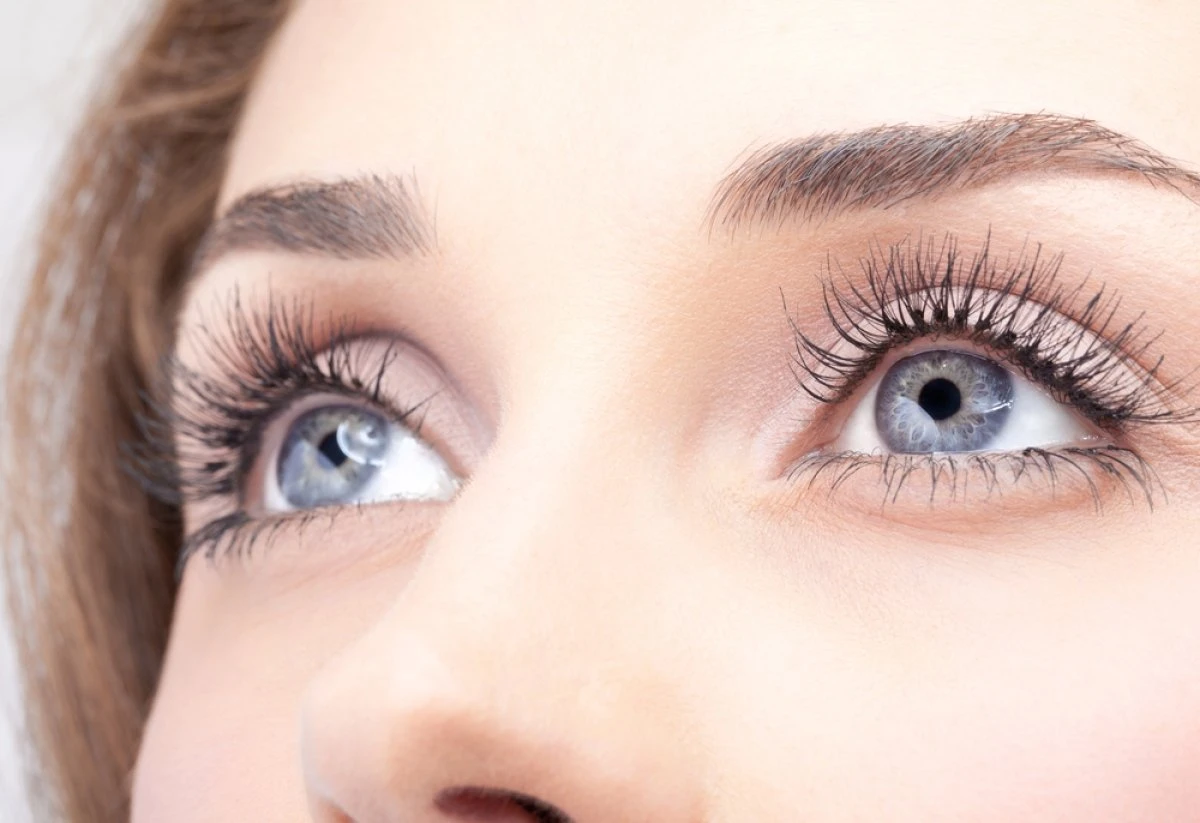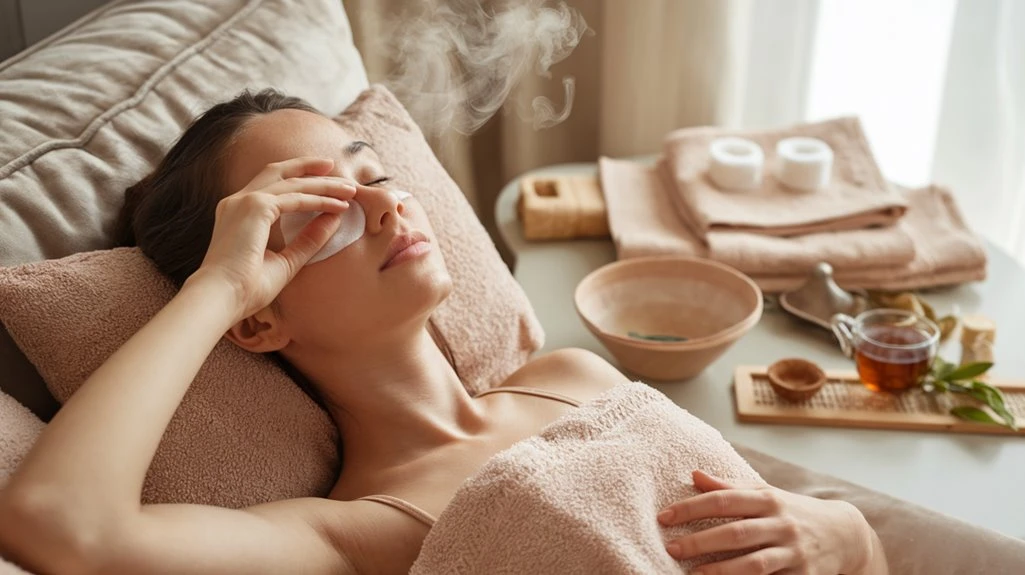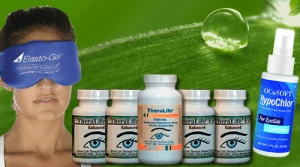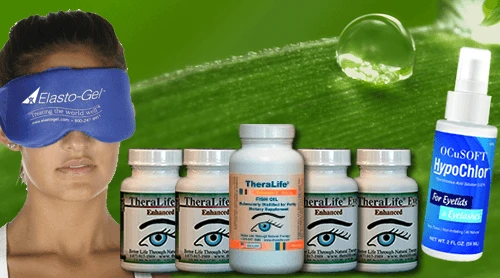TheraLife’s products offer significant benefits for those seeking relief from blepharitis and other eye conditions. By using a clean, lint-free cotton compress or one of TheraLife’s commercial eye masks, users can maintain the optimal temperature of 40–45°C for effective treatment. These masks can be applied over closed eyelids for 5–10 minutes, once or twice a day, with the option to reheat as needed. Following the compress application, a gentle lid massage and thorough cleansing are recommended. TheraLife emphasizes strict hygiene, advising customers to clean their compress after each use to prevent infection. Additionally, monitoring symptoms over time helps users understand their condition and enhance results. Overall, TheraLife provides comprehensive solutions for managing blepharitis and improving eye health.
Best Blepharitis/MGD Treatment From TheraLife- When Drops Don’t Work.
Key Takeaways
- Use clean, lint-free cotton or silk cloths for safe, comfortable warm compress applications on eyelids.
- Always heat the compress between 40°C and 45°C, testing it first to avoid burns or skin irritation.
- Apply the warm compress for 5–10 minutes, one to two times daily, for effective symptom relief.
- Gently massage the eyelids toward the lash line after compress use to promote oil gland clearance.
- Wash hands and disinfect compress materials after each use to prevent infection and maintain hygiene.
Choosing the Right Material for Your Warm Compress
When selecting a material for your warm compress to manage blepharitis, prioritize options that retain heat effectively and maintain hygiene standards. Evidence indicates that cotton materials are frequently recommended in clinical settings due to their breathability and ability to hold moisture and heat efficiently. You’ll find cotton pads or washcloths easy to clean, reducing the risk of recontamination. Silk options are also available, offering hypoallergenic properties and a smooth texture that minimizes friction on the sensitive eyelid margin, which is advantageous if you have sensitive skin or a history of allergic reactions. Regardless of your choice, always guarantee the material is durable, easily washable, and free from dyes or fragrances. This approach supports effective symptom management while reducing the risk of secondary complications. Consider using a hot compress made from Elastogel for heat retention and easy cleaning, as it is specifically designed to provide chronic dry eye relief and can be used both warm and cold.
Determining the Optimal Temperature
After selecting an appropriate compress material, focus on achieving the safest and most effective temperature for symptom relief.
Ideal warmth is essential for loosening eyelid debris and melting thickened oils without risking thermal injury. Evidence-based temperature guidelines recommend heating the compress to a range between 40°C and 45°C (104°F to 113°F). Exceeding this range may result in burns or irritation, while inadequate warmth reduces efficacy. Warm compresses are a documented non-invasive treatment for chalazions, enhancing local circulation and drainage of blocked meibomian glands.
Always test the compress on your inner wrist before applying it to sensitive eyelid tissue.
- Avoid compresses that feel uncomfortably hot to the touch—ideal warmth shouldn’t sting or burn.
- Use a thermometer for accuracy if unsure about temperature.
- Monitor any changes in skin sensation or redness during use.
- Prioritize patient comfort—the right temperature means safer, more effective relief.
Step-by-Step Guide to Applying a Warm Compress
To maximize therapeutic benefit, you’ll need to select appropriate compress materials and use the correct application technique. Evidence supports using clean, lint-free cloths or commercially available eye masks to guarantee both safety and efficacy. You should apply the compress with gentle, sustained pressure to the eyelids for the recommended duration to facilitate meibomian gland secretion and symptom relief. To ensure optimal results, consistently apply the warm compress three to four times daily, as this frequency has been shown to effectively manage chalazion symptoms.
Choosing Compress Materials
Selecting the appropriate compress material is essential for effective blepharitis management. You should weigh compress material types and fabric considerations to optimize therapy and guarantee safety.
Medical literature supports using clean, hypoallergenic fabrics to minimize irritation. Evidence indicates that some materials provide more uniform, sustained warmth, enhancing eyelid hygiene and glandular secretion. Always prioritize materials that allow adequate heat transfer without causing burns or discomfort.
Consider these clinical guidance points:
- Cotton or microfibre—These materials are soft, non-abrasive, and maintain warmth, decreasing risk of eyelid trauma.
- Commercial eye masks—Designed for ocular use, they deliver reliable temperature and promote compliance.
- Cleanliness—Regularly wash fabrics to reduce microbial contamination and prevent exacerbation of blepharitis.
- Hypoallergenic properties—Especially important if you have sensitive skin or allergies.
For those dealing with blepharitis, understanding common causes and symptoms can help tailor treatment and prevention strategies.
Correct Application Technique
Several precise steps guarantee ideal therapeutic benefit from a warm compress for blepharitis management.
Begin by washing your hands thoroughly to prevent introducing bacteria. Use a clean, lint-free cloth or a commercially available warm compress. Soak in water at a temperature between 40–45°C (104–113°F) to verify safety and efficacy.
Apply the warm compress over closed eyelids, ensuring correct positioning so the material covers the lids fully but doesn’t contact the cornea directly. Maintain contact for 5–10 minutes, reheating if necessary to sustain warmth.
Regular eyelid hygiene is crucial in managing blepharitis, as it minimizes symptom recurrence and prevents further complications.
Avoiding irritation is vital—confirm the compress isn’t too hot and never rub the eyelids. After removal, gently cleanse the lid margins with a sterile, moistened swab to eliminate debris or secretions, promoting ideal symptom relief.
How Long and How Often to Use Warm Compresses
For effective blepharitis management, apply a warm compress to your closed eyelids for 5 to 10 minutes, once or twice daily, as supported by clinical studies. Increase frequency during symptom exacerbation, adjusting based on your ophthalmologist’s guidance. Consistent use enhances lid hygiene and symptom control. Additionally, consider using hypochlorous acid solutions as part of your eyelid hygiene routine to effectively reduce microbial agents and improve treatment outcomes.
Best Blepharitis/MGD Treatment From TheraLife- When Drops Don’t Work.
Recommended Daily Compress Duration
Most clinical guidelines recommend applying a warm compress to the eyelids for 5 to 10 minutes, two to four times daily, to manage blepharitis symptoms effectively.
Establishing a consistent compress duration within your daily routine is essential for ideal lid hygiene and symptomatic relief. Adhering to the 5–10 minute recommendation guarantees the meibomian glands are sufficiently heated, promoting secretion and reducing eyelid inflammation.
Precision in timing helps prevent overheating, minimizing potential adverse effects such as skin irritation or discomfort. A multifaceted approach to blepharitis treatment, including warm compresses, is crucial in managing recurring symptoms and maintaining eye health.
- Maintain the recommended 5–10 minute compress duration—consistency drives results.
- Integrate the routine two to four times daily into your schedule to preserve relief.
- Use a timer to guarantee neither under- nor over-treatment.
- Remember, your dedication to this evidence-based approach transforms your eye health for the better.
Optimal Frequency for Relief
Establishing both the duration and frequency of warm compresses is essential to effective blepharitis management. Evidence supports adhering to specific frequency guidelines to guarantee ideal use.
Most clinical protocols recommend applying a warm compress two times per day during active phases of inflammation. Consistent application, typically morning and evening, helps maintain meibomian gland function, reduces debris, and supports tear film stability. For patients in remission or with mild, ongoing symptoms, you may reduce the frequency to once daily for maintenance. It’s vital not to exceed recommended sessions, as overly frequent use can cause skin irritation or exacerbate dryness.
Timing Adjustments for Symptoms
Although your symptoms may fluctuate, optimizing the duration and frequency of warm compresses can greatly influence blepharitis outcomes. Clinical evidence suggests that a standardized approach—usually 5–10 minutes per session, twice daily—offers the most consistent relief.
However, you should consider adjusting timing frequency based on symptom triggers, such as extended screen time or exposure to irritants. Frequent reassessment helps you align treatment with symptom patterns, preventing exacerbations. Your diligence in personalizing care can prevent unnecessary discomfort.
Regular use of warm compresses not only alleviates symptoms but also improves tear quality by loosening clogged oils in eyelid glands.
- Increase sessions if you notice flare-ups after exposure to known symptom triggers.
- Maintain at least twice-daily frequency during periods of active inflammation.
- Shorten duration gradually as symptoms stabilize, but don’t stop abruptly.
- Consult your eye care provider before making significant changes to timing frequency.
Enhancing Effectiveness With Gentle Eyelid Massage
While warm compresses serve to soften eyelid debris and secretions, research indicates that coupling this treatment with gentle eyelid massage can further promote the clearance of meibomian gland obstruction in blepharitis.
After applying heat, use clean fingertips to provide eyelid stimulation by gently massaging the eyelids in a circular or downward motion, directed toward the lash line. These massage techniques help mobilize thickened meibum and encourage its flow from the glands, enhancing relief of irritation and dryness.
Clinical studies demonstrate that consistent eyelid massage, following warm compress application, improves both gland function and patient symptoms. You should avoid excessive pressure to prevent additional irritation or trauma.
Integrate eyelid stimulation into your daily care regimen for ideal maintenance of eyelid health and sustained blepharitis relief. Meibomian gland dysfunction is a primary cause of blepharitis, making regular eyelid care essential in managing symptoms effectively.
Keeping Your Warm Compress Clean and Hygienic
Regular maintenance of your warm compress is essential to minimize the risk of re-infection and guarantee optimal blepharitis management. Proper cleaning methods and consistent hygiene practices prevent bacterial buildup and reduce the transfer of debris back to the eyelid margins.
Evidence-based guidelines emphasize cleaning your compress after every use and storing it in a sanitary environment. Using unscented, gentle soap—free from harsh chemicals—and thoroughly drying the compress guarantees residual moisture doesn’t promote microbial growth.
By strictly adhering to these steps, you support ideal ocular health and minimize complications.
- Wash your compress with fragrance-free soap after each use.
- Rinse thoroughly to eliminate detergent residues.
- Allow complete air drying before storage.
- Keep the compress in a clean, dry container between applications.
Signs That Indicate You May Need to Adjust Your Routine
If your blepharitis symptoms persist or worsen despite consistent use of a warm compress, it’s essential to reevaluate your routine. Signs fatigue, such as ongoing eyelid discomfort, prolonged redness, or increased crusting, may indicate that your current approach requires adjustment.
Assess routine consistency—are you applying the compress daily and for the recommended duration? Inconsistent sessions or inadequate heat levels can lead to suboptimal outcomes.
Also, monitor for new symptoms, heightened irritation, or sensitivity. If your eyes feel drier or more fatigued after sessions, consider changes in temperature, compress material, or frequency.
Persistent inflammation despite adherence suggests you may benefit from tailored clinical advice. Consult your eye care provider if you observe any concerning trends, despite rigorous routine consistency.
Best Blepharitis/MGD Treatment From TheraLife- When Drops Don’t Work.
Frequently Asked Questions
Can I Use a Warm Compress if I Wear Contact Lenses?
Yes, you can use a warm compress if you wear contact lenses, but you should always remove your lenses beforehand. This prevents contamination and supports ideal contact lens hygiene.
Apply the warm compress technique by placing a clean, moist cloth over your closed eyelids for 5–10 minutes. Evidence suggests this reduces eyelid inflammation but wearing lenses during the process may increase risk of infection or damage.
Always reinsert lenses with clean hands.
Are There Any Side Effects From Using Warm Compresses Long-Term?
Have you considered the long term effects of using warm compresses daily?
Generally, warm compress safety is well established in clinical studies, with minimal reported complications.
You might experience mild skin irritation or redness if the temperature’s too high or you apply heat for longer than advised.
To mitigate risks, use a moderate temperature (about 40°C), limit duration to 5–10 minutes, and always monitor for adverse skin changes over time.
Can Children Use Warm Compresses for Blepharitis?
Yes, children can use warm compresses for blepharitis if you prioritize child safety and proper compress technique.
Clinical guidance recommends you supervise application to avoid burns; guarantee the temperature is comfortably warm, not hot. Evidence suggests using a clean, damp washcloth works well.
Gently apply to the child’s closed eyelids for 5–10 minutes, twice daily. Always check the skin for redness or irritation, and consult a healthcare provider if symptoms persist.
What Should I Do if My Symptoms Worsen After Compress Use?
If your symptoms worsen after using a warm compress, you should stop treatment immediately.
Begin close symptom monitoring, noting any increased redness, pain, or discharge. Contact your healthcare provider promptly, as worsening may indicate infection or improper technique.
They might recommend alternative treatments, such as topical antibiotics or corticosteroids.
Don’t self-medicate or ignore symptom progression, as timely clinical guidance is essential for effective management and prevention of potential complications related to blepharitis.
Are There Any Alternatives to Warm Compresses for Blepharitis Relief?
You can try cold compresses for blepharitis; they reduce inflammation, relieve itching, and minimize swelling.
Cold compresses offer benefits if warmth increases discomfort. You may also explore herbal remedies, but evidence for their effectiveness is limited.
Topical tea tree oil helps with Demodex blepharitis, but use it carefully under clinical supervision.
Always maintain eyelid hygiene, avoid irritants, and consult your ophthalmologist for tailored treatment options before using alternatives to warm compresses.
Best Blepharitis/MGD Treatment From TheraLife- When Drops Don’t Work.
Conclusion
As a warm compress expert, you’re ready to tackle blepharitis with confidence, thanks to TheraLife.com’s comprehensive approach. Their products are designed to support eye health with science-backed solutions, ensuring symptom relief beyond traditional methods. By incorporating rigorous hygiene practices and reassessing your eye care routine, you can effectively manage blepharitis symptoms. TheraLife’s offerings, grounded in scientific research, empower you to apply warm compresses like a pro, leaving behind outdated remedies. Trust in TheraLife’s data-driven approach, and your eyelids will surely appreciate it.





